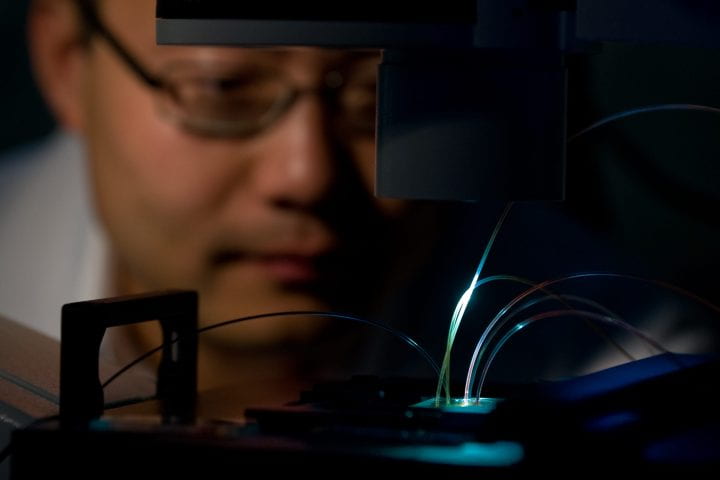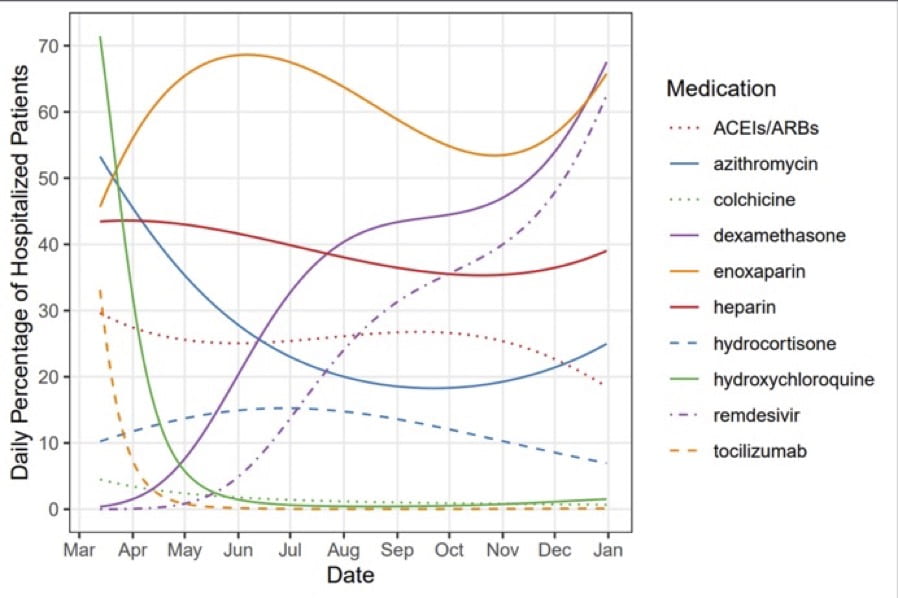A sense for biosensors
Weian Zhao has created a device that dramatically improves detection of bacterial and viral invaders in blood samples

As a doctoral student at McMaster University in Hamilton, Ontario, Weian Zhao took part in a Canada-wide research effort to develop bioactive paper that would detect, capture and deactivate waterborne and airborne pathogens.
As part of this project, he helped invent gold nanoparticle-coated paper that could detect common pathogens, such as E. coli, but ultimately, the product didn’t meet his exacting standards of diagnostic speed and sensitivity. With a freshly minted Ph.D. in chemistry, Zhao moved on to a joint postdoctoral fellowship at both the Massachusetts Institute of Technology and Harvard, where he dove into stem cell research, his biosensor work seemingly left north of the border.
But the challenge of creating a technology that could rapidly and selectively identify bacterial and viral invaders in blood samples nagged at the young scientist, even as he joined UC Irvine in 2011 as an assistant professor of pharmaceutical sciences with state-of-the-art lab space in the Sue & Bill Gross Stem Cell Research Center.
And then he met Enrico Gratton. In his Laboratory for Fluorescence Dynamics, the UCI biomedical engineer and colleagues have been developing imaging tools for biomedical applications. Among them is a three-dimensional particle counter that tags low-concentration fluorescent particles in large volumes of solution within several minutes, which drew Zhao’s attention. He knew he was back in the biosensor game.
Employing this particle counter, Zhao created a bloodstream infection test that speeds up diagnosis times with unprecedented accuracy – allowing physicians to treat patients with potentially deadly ailments more promptly and effectively.
Zhao says that the Integrated Comprehensive Droplet Digital Detection system can, in as little as 90 minutes, detect bacteria in milliliters of blood with single-cell sensitivity; no cell culture is needed. He published his latest results in the November issue of Nature Communications.
“We are extremely excited about this technology because it addresses a long-standing unmet medical need in the field,” says Zhao, who also holds a faculty appointment in biomedical engineering. “As a platform technology, it may have many applications in detecting extremely low-abundance biomarkers in other areas, such as cancers, HIV and, most notably, Ebola.”
Bloodstream infections are a major cause of illness and death. In particular, infections associated with antimicrobial-resistant pathogens are a growing health problem in the U.S. and worldwide. According to the Centers for Disease Control & Prevention, more than 2 million people a year globally get antibiotic-resistant blood infections, with about 23,000 deaths. The high mortality rate for blood infections is due, in part, to the inability to rapidly diagnose and treat patients in the early stages.
Recent molecular diagnosis methods, including polymerase chain reaction, can reduce the assay time to hours but are often not sensitive enough to detect bacteria that occur at low concentrations in blood, as is common in patients with incipient blood infections.
The Integrated Comprehensive Droplet Digital Detection technology differs from other diagnostic techniques in that it converts blood samples directly into billions of very small droplets. Fluorescent DNA sensor solution infused into the droplets detects those with bacterial markers, lighting them up with an intense fluorescent signal. Zhao says that separating the samples into so many small drops minimizes the interference of other components in blood, making it possible to directly identify target bacteria without the purification typically required in conventional assays.
“The IC 3D instrument is designed to read a large volume in each measurement, to speed up diagnosis,” Gratton says. “Importantly, using this technique, we can detect a positive hit from hundreds of millions of measurement samples with very high confidence.”
But invention was only the first step. Zhao wants to commercialize IC 3D. At UCI, faculty researchers with an entrepreneurial bent can work with the Institute for Innovation, an interdisciplinary and campuswide center focused on integrating research, entrepreneurship and technology to create real-world applications that benefit the public and drive the economy. The Office of Technology Alliances, part of the institute, helped Zhao patent-protect the IC 3D technology and establish a spin-off company, Velox Biosystems, to test and manufacture a commercial IC 3D device.
Currently, Zhao is focusing on applying IC 3D to cancer treatments – an extension of the research he’s been advancing since joining UCI.
Zhao has been developing stem cell messengers that selectively migrate to cancer sites to deliver tumor-fighting drugs or probes for contrast-enhanced medical imaging. This could, potentially, enable the identification of cancer micro-metastases at their early stages and increase the effectiveness of chemotherapeutic treatments for metastatic cancer while mitigating the symptoms associated with systemic chemotherapy.
For this work, Zhao was included in the MIT Technology Review’s 2012 list of the world’s top innovators under the age of 35, and this year he earned a prestigious National Institutes of Health Director’s New Innovator Award to further his efforts to create stem cell-based detection methods and treatments for cancer.
He’s also collaborating with Dr. Jason Zell, an assistant professor of medicine and co-leader of the Colon Cancer Disease-Oriented Team at UCI’s Chao Family Comprehensive Cancer Center, to use IC 3D to identify biomarkers in colon cancers. This could enable oncologists to gauge the effectiveness of treatment during the cancer’s early stages more accurately than with current methods, which Zell says are not reliable.
Zhao is now seeking business partners to accelerate Velox Biosystems’ growth and hopes to conduct clinical studies of IC 3D’s utility in patient diagnosis and treatment.
“That’s what’s so important about this project,” he says. “We’ve created a multi-platform tool that has the potential to work with a variety of infections and diseases. I’m very excited about its future.”


